Scroll Down to Read Today’s Essay
Subscribe to Baseball History Comes Alive for automatic updates. As a Free Bonus, you’ll get instant access to my Special Report: Gary’s Handy Dandy World Series Reference Guide!
Today Vince Jankoski returns with Part Two of his four-part series on baseball goats, focusing on the Dodgers. The first two incidents, involving Mickey Owen and Ralph Branca are well known, but the third involving the great Gil Hodges and his unfortunate – and uncharacteristically poor – performance in the 1952 World Series is not as well known. Although, as Vince makes clear, he more than redeemed himself in subsequent World Series action. -GL
THE DODGERS’ GOATS
Just as the Giants’ dominance of the Deadball Era generated goats, so too, the Dodgers’ dominance in the 1940s and 1950s gave their players the opportunity to be goats in their own right. For your evaluation consider:
Mickey Owen, the Banned Goat
Mickey Owen was the regular catcher for the pennant-winning 1941 Brooklyn Dodgers. In Game Four of the World Series that year, the Yankees’ Tommy Henrich came to bat in the top of the ninth inning with two outs. The Yankees held a 2-1 advantage in games, but the Dodgers led the game 4-3, and looked to even the Series. Henrich worked the count to 3-2. He swung and missed at pitcher Hugh Casey’s next offering, but Owen failed to catch the ball. As the ball rolled to the backstop, Henrich scampered to first. [See featured photo above] The miscue kept New York alive. They would score four runs that inning and win the game 7-4. The next day, they finished off the Dodgers 3-1.
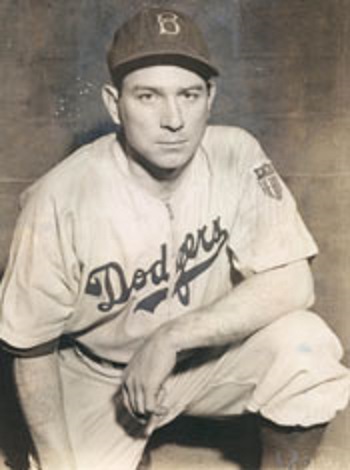
Owen was a fairly good ballplayer. He was the regular catcher for the Cardinals from 1938-1940, before being traded to the Dodgers. He was Brooklyn’s regular backstop from 1941 until he entered the Navy during the 1945 season. When he came back from the war, he along with other major league players, jumped to the outlaw Mexican League, an effort by the Pasquel brothers to lift the status of their league by signing major league players. Commissioner Happy Chandler was not happy at all about those signings. He issued lifetime bans to all players, including Owen, signing with the Mexican League. By the time the ban was lifted in 1949, Roy Campanella was ensconced as the Dodgers catcher. There was no room for Owen. He signed with the Cubs where he played for three more seasons before finishing out his career with Boston in 1954.
Owen was a four-time All-Star and was fourth in the MVP balloting in 1942. A weak hitter, in 1941, he set a record for catchers with a .995 fielding percentage. He twice led the league in throwing out potential base stealers. On the other hand, he also led the league in passed balls twice. Maybe that was foreshadowing. On balance, he was a major leaguer for thirteen seasons. It would have been sixteen but for Chandler’s ban. He was not a bad ball player, forever remembered for his goat performance in the 1941 World Series.
Ralph Branca, the Most Famous Goat
In mid-August of 1951, the Brooklyn Dodgers led the National League by thirteen and one half games. The second-place Giants made a move, aided by a hidden camera located in their centerfield clubhouse which enabled them to steal the signals of the opposing catchers. The Giants went 37-7 down the stretch to finish in a tie with the Dodgers. A three-game playoff would decide the pennant. With the playoff series tied at one game apiece, the finale was held in the Polo Grounds.
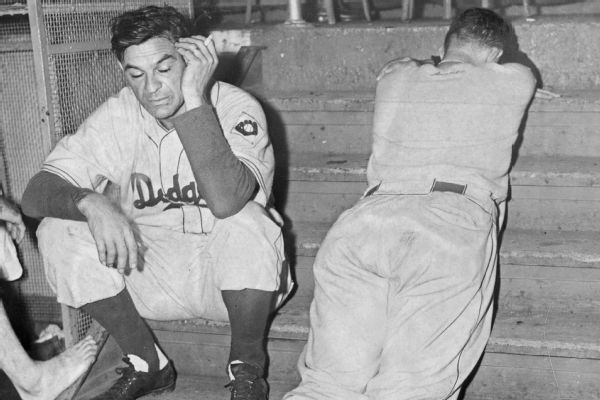
The Dodgers led 4-1 entering the Giants’ half of the ninth inning. Al Dark led off with a single. Don Mueller singled Dark to third. Monte Irvin fouled out. Whitey Lockman doubled home Dark. Mueller advanced to third, but was injured sliding into the base. He was replaced by pinch-runner Clint Hartung. As Bobby Thomson walked to the plate, Ralph Branca replaced Don Newcomb as the Dodgers moundsman. On an 0-1 count, Thomson struck “the shot heard round the world,” a three-run homer, giving the Giants the game and, in the words of Giants’ announcer Russ Hodges, “The Giants win the pennant! The Giants win the pennant!”
In some ways, Branca was a typical American anomaly. His father was born in Italy. His mother was a Hungarian Jew. He was raised Roman Catholic. Two of his mother’s family died in Nazi death camps. He was the fifteenth of seventeenth children.
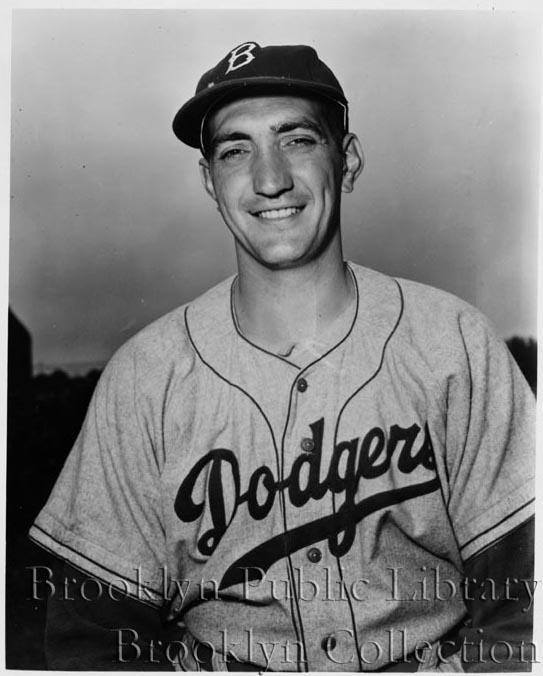
Branca was also a pretty good pitcher at least prior to Thomson’s home run. He won 21 games in 1947. He led the National League in won-loss percentage two years later. He was a three-time All-Star from 1947-1949. Prior to Thomson’s homer, Branca had a 76-56 won-loss record, but was 12-12 afterward. All of his twelve career shutouts were before “the shot heard round the world”. He suffered a back injury during spring training in 1952. He was not the same pitcher subsequently. Was it the back injury or the psychological effects of Thomson’s goat-producing home run that spelled the end of a productive career? He remains the most famous goat of all time.
Gil Hodges, the Revered Goat
Gil Hodges is one of the most revered figures among baseball fans. A mid-westerner who continued to make Brooklyn his home even after the Dodgers left for Los Angeles, he returned to the Big Apple to manage the Miracle Mets of 1969 to a world championship only to die suddenly a few years later at the tragically young age of 47. It pains me to write that Hodges was the goat of the 1952 World Series.
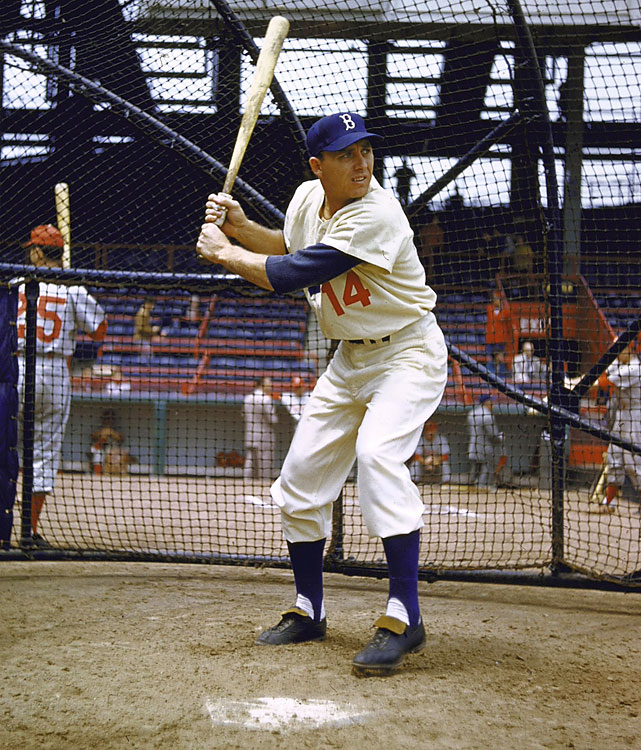
That year the Dodgers and Yankees squared off in what would be the third of six subway series held between 1947 and 1956. The series was close with the Yanks winning in seven games. All of the games except Game Two were decided by a run or two. With each game being decisive, Hodges went 0-21. Furthermore, he failed at crucial junctures in the Series.
In Game Four, Hodges batted in the seventh inning with his team behind 1-0. Roy Campanella was on first with one out. Hodges grounded into a double play. The Dodgers lost 2-0.
In Game Six, Hodges struck out in the second, fourth, and seventh innings before being replaced with Rocky Nelson as a pinch hitter in the 9th. The Dodgers lost 3-2.
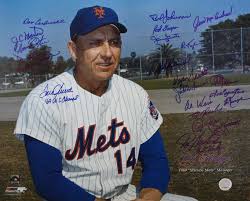
In the deciding seventh game, a 4-2 Yankee win, Hodges redeemed himself slightly by driving in a tying run in the fourth inning with a sac fly. However, in the sixth, with his team down by a run, he hit into another double play.
Hodges was a great player. The year of his World Series flop he hit 32 home runs and drove in 102. He walked 107 times. His batting average was only .254, but with all those walks, his OBP was .386. For his career, he hit 370 dingers and had 1,274 RBIs. He played for eighteen years, fifteen of which he played in at least 100 games. He had over 40 home runs twice and in excess of 30 homers five years in a row and six times in seven consecutive seasons. He was an eight-time All-Star and won three Gold Gloves.
Nor was he a World Series choke. He followed his abysmal 1952 effort by batting .364 with a slugging average of .500 in the Fall Classic the next year. In the 1955, 1956, and 1959 Series, he hit .292, .304, and .391, respectively. His slugging averages in those Series were .417, .522, and .609. In 1956, he drove in one-third of his team’s runs. In 1952, he simply ran into a slump in an inopportune time, earning the goat’s horns. Sad. Life may not be fair, but it is not boring.
Vince Jankoski
Subscribe to our website, Baseball History Comes Alive with over 1400 fully categorized baseball essays and photo galleries, now surpassing the one million hits mark with over 1,174,000 hits and over 950 subscribers: https://wp.me/P7a04E-2he
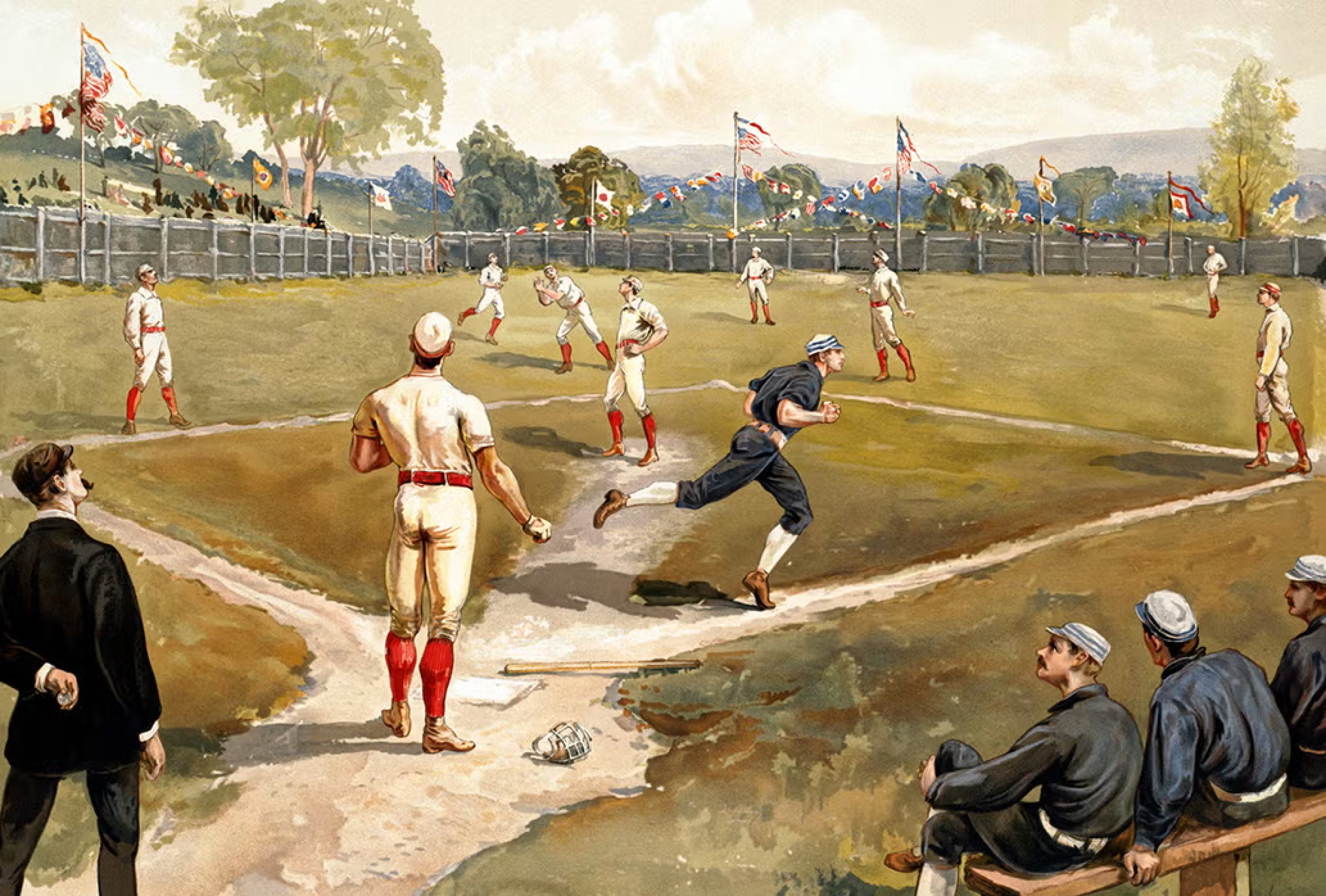
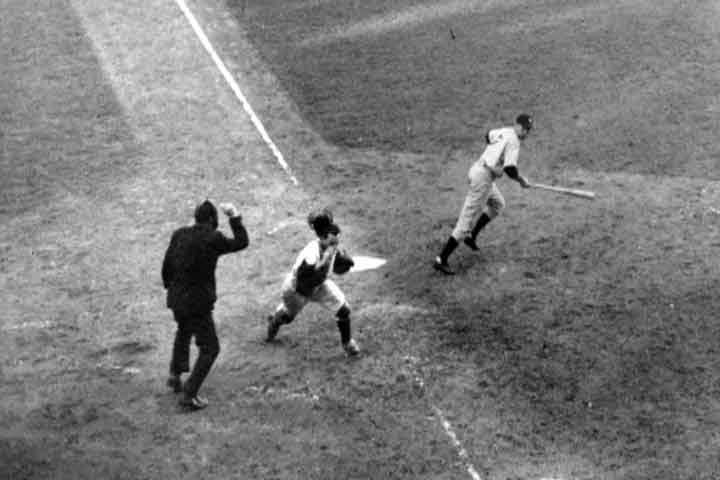

You give great stats, Vince!
Certainly, Hodges simply ran into one of those inexplicable slumps in ’52 but was generally a tough out in the clutch. I had no idea he was so prolific in those subsequent WS games.
Branca was a good pitcher and a good man. But he had the unfortunate propensity to yield a long ball in big spots. Erskine or Labine would have been the better choice to face Thomson.
The Giants’ sign stealing was no factor in their winning streak and phenomenal drive to win the pennant. They beat the Dodgers in game one of the playoffs at Ebbets Field, with Bobby T. also hitting the game winning homerun to beat Branca. Then they came home to the Polo grounds and stole all the signs and promptly got shut out 10-0.
They had the best team ERA in the National League, which kept them in every game. They had a higher team batting average at home before the elaborate pilfering mechanism was set-up then they did subsequently.
Durocher at his best could whip a team into a frenzy of accomplishment like no other manager. In 1950, with no stolen signs, they went 17-1 during one notable stretch.
You forgot to mention the NY Giants stealing the signs during 1951 season. The Dodgers didn’t collapse. They wre robbed by thieves…..the NY Giants.
Patti,
I did mention the sign stealing, although as Bill Schaefer points out, some debate whether it made a difference.